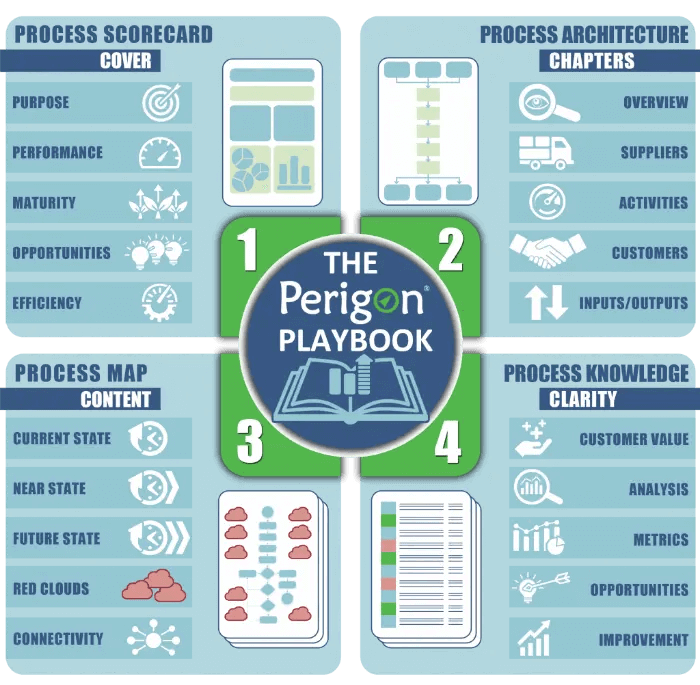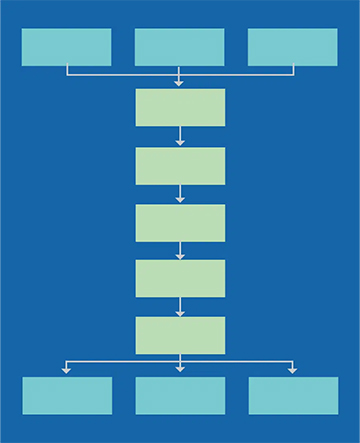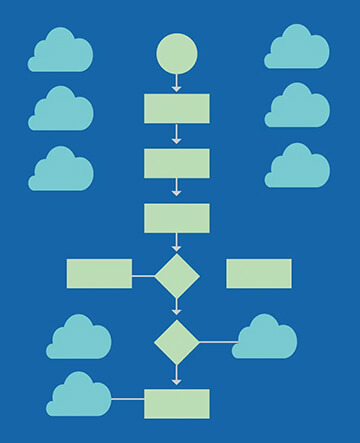The Perigon Playbook
Business Enterprise Mapping
The Process Map Becomes a Playbook
The process map has now become the comprehensive Perigon Playbook containing all of the organization’s knowledge about a process. It contains four key playbook elements:
- Process Scorecard
- Architecture Map
- Process Map
- Process Knowledge


Process Scorecard
The Cover
The Process Scorecard summarizes the purpose of the process, improvement status, first pass yield, cost per unit, and customer relationships. It provides a quick glance into process characteristics and performance.

Architecture Map
The Table of Contents
The Architecture Map provides a summary flow chart that establishes the backbone of the process, along with the main suppliers and customers. It gives the executive a quick summary as to where the process resides within the organization and what is taking place in the process.

Process Map
The Contents
The Process Map can contain maps for up to three process states, including current state, near state, and future state.
Current State defines the beginning process – describes the who, what, when, where and why of the process while pointing to the how (tasks are executed).
Near State is developed from current state as improvements are incorporated and the process moves toward deployment.
Future State builds upon the prior process definition and analysis to develop a streamlined process vision that incorporates best practices and future software/automation capabilities.

Process Knowledge
The Clarity
Process Knowledge details the organization’s process knowledge characteristics.
RACI Analysis identifies roles and responsibilities for each task.
Value Analysis assesses the value of each task.
Information Analysis identifies knowledge required to produce primary deliverables, including work instructions, procedures, specifications and checklists (the how).
Transaction Analysis describes the process interaction with technology, how tasks are supported software and hardware used.
Customer Value Assessment determines the primary customer requirements for quality, responsiveness, cost, and support.
Metrics Analysis assesses the measures used to monitor process performance.
Opportunity Analysis evaluates, classifies and prioritizes improvement opportunities.
Process Improvement Plan establishes the main goals, actions, responsibilities, and dates to implement desired Quick Win improvements.

